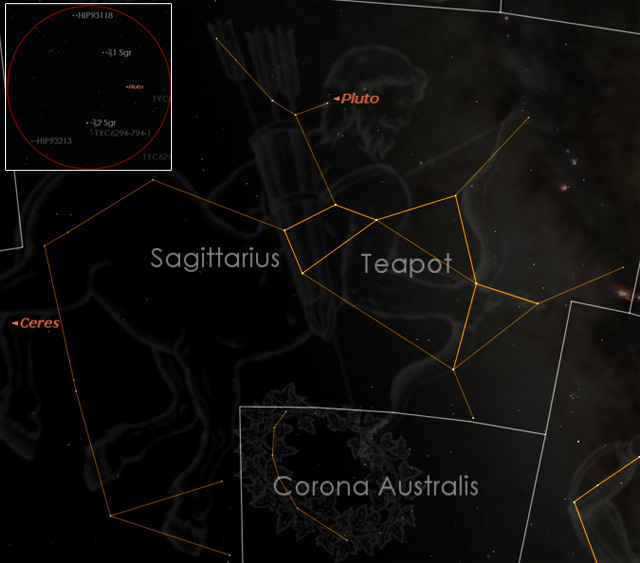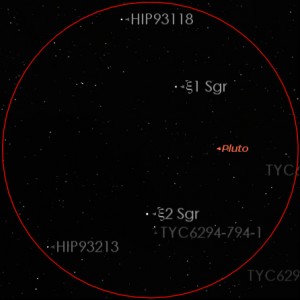Greetings, fellow astrophiles!
“It goes to show you never can tell.” – Chuck Berry
As of 10 a.m. On Saturday, August 8th, it was pretty clear that the late evening and early night time sky wasn’t going to be. The usual complement of forecast websites and Clear Sky Clock all indicated that the night was going to go from Mostly Cloudy to Partly Cloudy after midnight. A generally bad sign for amateur astronomers on both counts:
1. There would likely be enough cloud cover to distract from observing
2. There would likely be just enough clear sky to make you regret setting up the scope
Our Friends of Rogers (FoR) session in Sherburne was scheduled as an Observing-Only event. If the sky was completely overcast, there likely wouldn’t have been any confusion as to what wasn’t going to happen that evening. The forecast of Mostly Cloudy, coupled with (1) a one-hour drive for most of us from here to there, and (2) FoR having done plenty of advertising for the event but not having an RSVP list or any way to contact people that the session wasn’t going to happen, made for a small conundrum.
For those not in the know (from the Friends of Rogers website)…
Operated and run by Friends of Rogers as a non-profit to provide outstanding educational opportunities that excite, inspire, and motivate people of all ages to enjoy, understand, and protect our natural environment.
FoR is a beautiful facility and grounds pocketed away in Sherburne, NY. Similar to our more local Beaver Lake Nature Center. The place includes lecture facilities, equipment rentals, plenty of walking space, summer classes of varied kinds for kids (for which we may host an astro-specific event next summer), and a very friendly staff (frankly, it isn’t often that staff is still ready for more at 11:00 p.m. at many of the placed we hold sessions).
The solution was for our Observing event to be announced as cancelled, but I’d head down anyway to provide some kind of indoor astronomical program for anyone who showed. I arrived around 7:40 p.m. to three staff and one visitor, followed soon by a half-dozen more attendees. With my honest-ta-goodness-totally-legit Mars and Ceres rocks and various meteor fragments and consequence pieces (desert glass, tektites, etc. I’ve also promoted Kopernik’s own Patrick Manley’s daughter’s discovery to near-legendary status in these parts) in tow, plus a 30-or-so minute lecture on 2015 Astronomy Highlights, we ended up having a two hour discussion indoors before stepping outside to talk a little bit about finding prominent constellations, navigating the circumpolar constellations, orienting ourselves in preparation for the Perseid Meteor Shower peaking this week, and then observing a total of 30 stars in the same single 26mm Nagler field of view through my NMT 12.5” Dob and the Lagoon and Trifid Nebulae through one attending’s pair of binoculars.

The little teapot, short and stout, in the body of Sagittarius.

Pluto, threading the 4/5 mag. needle at the tip of the teaspoon (the “needle” stars are easy in low-power binoculars. Pluto, not so much). Click the image for a larger view.
That set of 30 stars in the same field of view was crystal clear for a few minutes, and fortuitous given the lecture content. With a clear shot of the handle of the Teapot that is the body of Sagittarius, you can find your way to the teaspoon (well, to me, anyway) just above and to the left of the handle. The end star of the teaspoon is actually 2 stars, one a pure white (ksi 1) and the second a deeper orange/red (ksi 2, with a small companion off to one side). As it so happens, Pluto is threading the needle hole at the moment right between those two stars (see the image below).
While none of us actually “saw” Pluto given the conditions (and that would be a Herculean effort in a 12.5” Scope with a few surrounding lights), we all did have more than a few photons from Pluto, Charon, Kerberos, Nix, Hydra, and Styx, hit our retinas (technically, even a few from the New Horizons spacecraft itself. Isn’t statistics wonderful!).
The lesson learned for any and all future sessions (provided no rain) are as follows:
1. Always be prepared to say something (handing people a piece of another planet and/or dwarf planet makes that pretty easy).
2. An attending registry can be very helpful. In CNYO’s case, we’re going to make sure that our Facebook and Meetup events list are always up-to-date.
And, with that, we await what the weather holds for this coming week’s Perseid Meteor Shower. If it’s clear, several of us will be out most of the week hoping to spot a few at local parks. See our official announcement post for details. We hope to see you!








